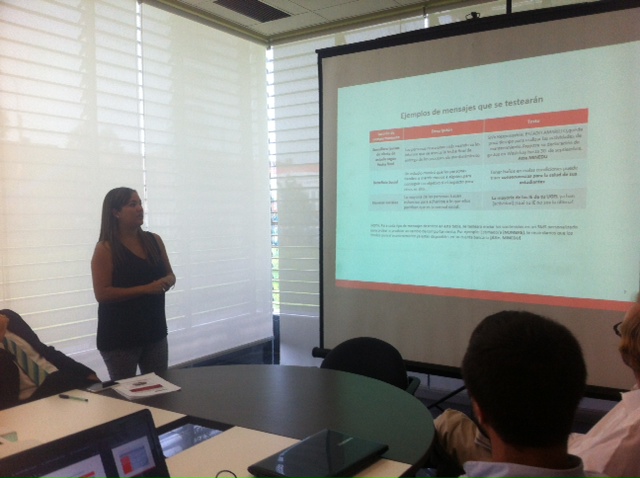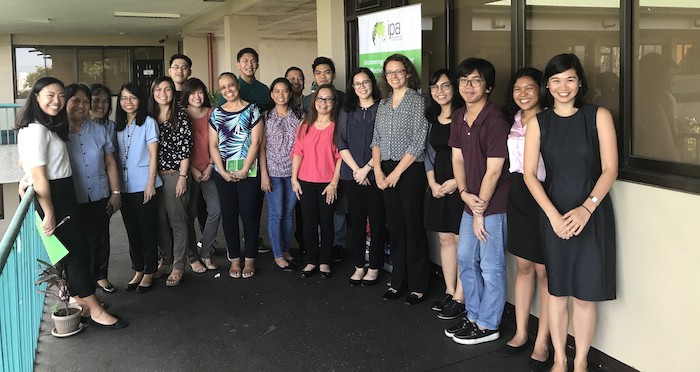Working from within Governments to Encourage Evidence-Informed Decision-Making
(Editor's note: The title of this post has been updated.)
IPA pursues many strategies to move evidence to policy impact, but one that engenders particularly meaningful partnerships is to work from within governments, whether through embedding staff within government offices or facilitating the institutionalization of an “evidence unit” within a ministry. For example:

- An IPA policy associate is currently working within the Department of Education in the Philippines.
- From 2016-2018, a policy associate was working within the Philippines Department of Social Welfare and Development (DSWD).
- IPA and J-PAL collaborated with Peru’s Ministry of Education to develop MineduLAB, an innovation lab for education policy housed within the government of Peru.
- IPA is now working with the Ministry of General Education in Zambia to build embedded evidence capacity there.
Our goal is to help governments accomplish their own goals, using the best available evidence and/or generating their own evidence. Here we share some of the lessons our staff has picked up along the way in different countries.
Advantages of working from within
Increased government ownership. This is the main point of working from within the government. We’ve found that taking the time to work through the existing structures makes the work more sustainable after IPA steps back.
Specific strategies can increase this ownership. For example, an IPA policy associate embedded in Colombia’s National Planning Department (funded by J-PAL's Government Partnership Initiative) chose two of his public-sector colleagues to serve as teaching assistants in an advanced training course he ran at the division. This strengthened their knowledge of rigorous evaluation and empowered them to become advocates within the Department. After the policy associate left the division, these two champions remained, continuing the work.
Another strategy is to conduct theory of change workshops, like policy associates in the Philippines have done in order to understand the main programs of their government partners. This gives government staff an opportunity to reflect on program design and implementation, and also to determine appropriate monitoring and evaluation methods. It also allows IPA to gain a deep understanding of the program and the government partner, which is critical for developing learning and research opportunities in the future. Because the theory of change is by and for the government staff, there is greater internal ownership over the next steps to support evidence-informed decision making within their offices.

Access to a large network of relationships. These networks grow the work in unexpected ways. For example, a staff member from Peru’s Ministry Education moved to the Ministry of Development and Social Inclusion (MIDIS) and brought his interest in rigorous research and relationship/trust in IPA with him. Since MIDIS was also interested in building a lab-style project, he was able to add that randomized evaluation component to the project and get IPA involved.
Ultimately, we believe this strategy improves research and improves policies through mutual learning.
Ultimately, we believe this strategy improves research and improves policies through mutual learning. Juan Manuel Hernández-Agramonte, Country Director for IPA Peru, Paraguay, and Bolivia and one of the authors of this post, has worked with and within several government agencies on evidence partnerships. In his experience, the close relationships improve research projects—increasing their relevance, nuance, and even accuracy, through greater understanding of program and policy details. And understanding how government works and how policy is made increases our ability to advocate for evidence-informed change.
Tips for working from within
Be present in (and outside) the office. Relationships are key in policymaking, and being able to be more physically present with policymaking colleagues is one of the main advantages of being embedded in a government office. Many details and nuances will emerge informally in meetings that might not come across in emails or phone calls. Embedded staff can focus on building their social capital with government colleagues to make the most of an embedded placement.
For example, the weekly working sessions of an IPA Philippines policy associate in the Department of Social Welfare and Development Sustainable Livelihood Program (SLP) cultivated trust between the IPA and SLP teams. The SLP team was open to sharing information about the challenges and problems it faces in implementing the program. This came in handy when designing activities that would respond to SLP’s specific evaluation needs. Our colleague at Colombia’s Division of Monitoring and Evaluation of Public Policies (DSEPP) joined the office soccer team and remarked that he learned more by remaining at DSEPP for the games after official meetings than at the meetings themselves.
Focus on being useful. IPA staff enter government partnerships with clearly agreed upon expectations and goals—but also with a mandate to be useful and focus on providing value to the partner. We emphasize building our collective capability to achieve what it is that the partner wants to achieve, rather than lobbying for a certain point or policy. The only thing we advocate for is the use of evidence.
For example, when a partner at the Ministry of Education in Peru was setting up their M&E system, IPA staff informally explained to them some details around digital data collection. This fell outside our formal work plan, but the partner greatly appreciated the help.
We emphasize building our collective capability to achieve what it is that the partner wants to achieve, rather than lobbying for a certain point or policy.
Choose a partner that has some budget and decision-making authority. Prior to creating MineduLAB, IPA Peru and J-PAL LAC created the Quipu commission, which brought together academics and policymakers to discuss important policy challenges in Peru and think about evidence-informed policies to address these challenges. The commission served as a useful forum but had limited policy impact, mainly due to a lack of enforcement mechanisms and resources. The partners corrected this when setting up MineduLAB, positioning it within a key unit that controls budget and M&E activities.
Pitfalls to avoid
The tricky balance of encouraging vs. supporting vs. hand-holding. While ownership is more naturally accomplished when working from within a government, it is still a hard line to hold. We are aware that government ownership is a difficult issue that doesn’t often get more than lip service. One strategy is to keep the work to the current capabilities of the government partner (resisting the urge to inject further outside resources) such that it can be sustained after the placement ends. It is also important to ensure that we involve government staff in all activities and outputs rather than working on things on our own.
When this two-way learning happens organically, co-ownership of the project can run very deep.
One model that has worked particularly well is to identify a government counterpart to partner with the embedded staff—to attend meetings together, and informally exchange skills and knowledge. When this two-way learning happens organically, co-ownership of the project can run very deep. In fact, staff from IPA have often gone to work for government partners, and vice versa.
Getting rigidly pegged to one office, one directorate, or one team. Making the most out of an embedded placement can mean building relationships more broadly through the partner organization. Our Philippines associate recommends organizing brown bags, workshops, or policy events and inviting all department staff beyond the partner program unit. This activity helped IPA gain recognition across DSWD for its expertise in research and evaluation and provided opportunities to cultivate a research-oriented environment and institutionalize the use of evidence in the department beyond SLP.
It is also important to engage multiple levels of the government unit—from mid-level staff (working closely with them throughout the engagement to build co-ownership), to management (to provide transparency on progress, receive feedback, and consult on other research and evaluation needs), even director-level staff (for overall buy-in, direction, and approval).
Building relationships takes time, and cultivating trust takes even longer. Embedding staff can jumpstart this process, leading to mutual learning and organic change.
Our experience suggests embedding staff within ministries or departments can indeed help institutionalize evidence creation and use in the unit. Building relationships takes time, and cultivating trust takes even longer. Embedding staff can jumpstart this process, leading to mutual learning and organic change.











